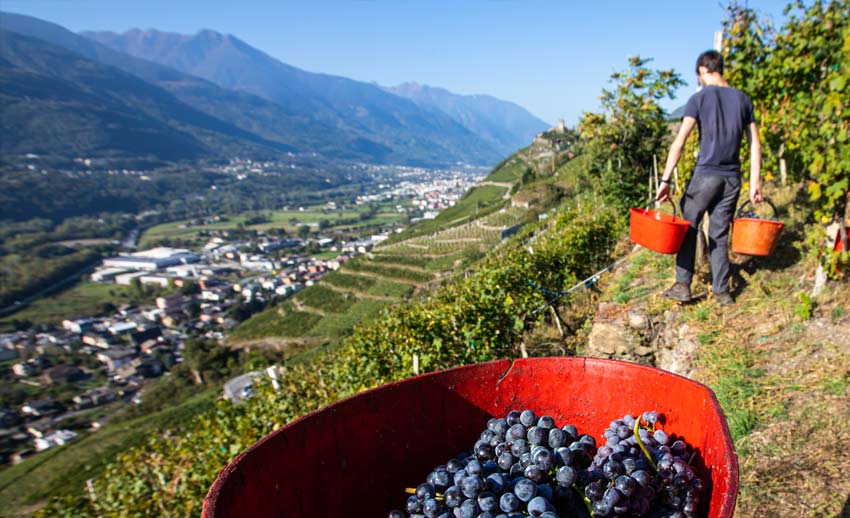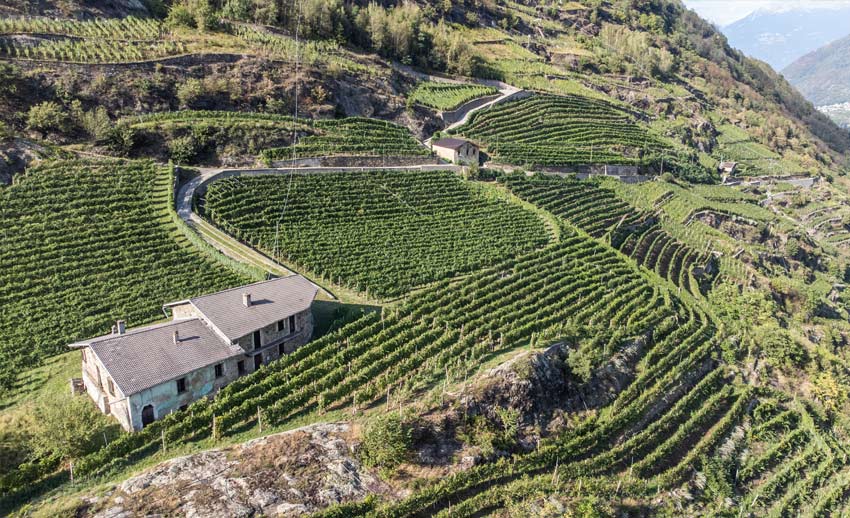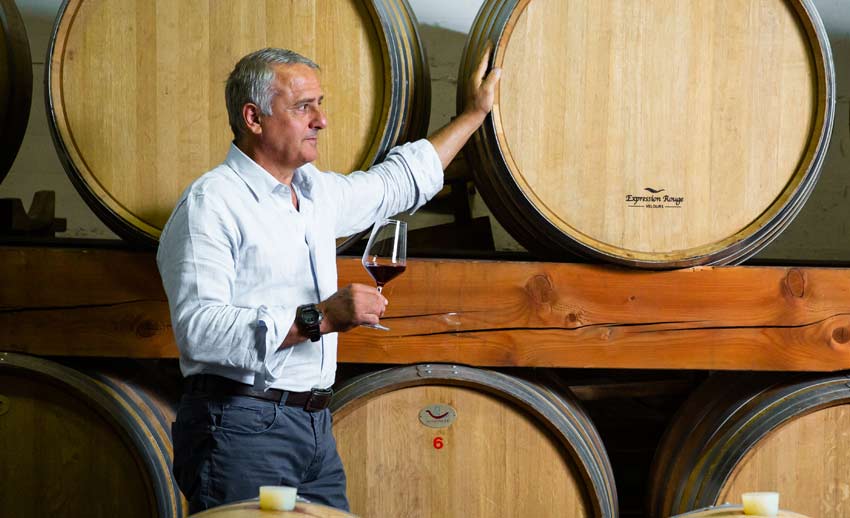
Nebbiolo Grape Variety


Nebbiolo (Chiavennasca) is considered one of the most prestigious vines, suitable for aging wines of the highest quality. Autochthonous vine of Valtellina, where it is also called Chiavennasca, it forms the basis for the production of the DOCG Valtellina Superiore and Sforzato. It is grown in particular abundance in Piedmont in the Langhe and Roero in the province of Cuneo and in Upper Piedmont. It is also present in the Asti area, albeit in smaller quantities; it is also widespread in the Lower Aosta Valley and is also present in Franciacorta. Also in northern Sardinia, in the area of the Municipality of Luras, a fine Nebbiolo is produced. It is a vine producing very high quality grapes with a good balance between colour, body, acidity, persistent and volatile aromas, alcoholic robustness. It is therefore a suitable grape to be vinified alone or with minimal contributions, to produce wines that can be defined as "noble" with great body; it is a vine suitable for ageing, stable in terms of aromas and colour. At the end of maturation, Nebbiolo wines have a bouquet with fruity notes and dried flowers and spices. On the palate the tannin is moderate.

In Valtellina, the Fojanini Foundation has developed a clonal selection project for Chiavennasca vines with the following results: Nebbiolo-Chiavennasca clone 12 Of medium vigor, good and constant productivity, excellent fertility, more than good basal fertility, it adapts to contained forms of farming, with Guyot pruning; anticipates budding; medium-small leaf from pentagonal to orbicular, five-lobed, petiole sinus with closed lyre, flap slightly incised, slightly cupped with slightly wavy and revolute margins; the bunch is medium-small, cylindrical-conical in shape with two evident wings, compact, short peduncle, medium-sized berry, short ellipsoidal, black-purplish colored skin, very pruinose, of medium consistency; good tolerance towards downy mildew, fair towards powdery mildew and botrytis; real fertility: 1.05; wine of a rather lively ruby-red color, with marked fruity scents, to which are added spicy and other slightly herbaceous notes, with a good structure, the acidity is sustained, fine, suitable for long aging; in blend with other clones of the CH series it adds color and roundness.


Nebbiolo-Chiavennasca clone 21 Of medium vigour, medium, constant productivity, good fertility, including that of the basal buds, for which it adapts to contained forms of cultivation, with Guyot pruning; anticipates budding and veraison; the leaf is medium or medium-large in size, from pentagonal to wedge-shaped, five-lobed but often epta or enolobed, lyre-shaped petiolar sinus, incised flap, with a flat profile with wavy and revolute margins; medium cluster, cylindrical-conical with two evident wings, semi-compact, elongated peduncle, medium berry, short ellipsoidal, blue-black skin, very pruinose, medium consistency; discrete tolerance towards botrytis and desiccation of the rachis; real fertility: 0.96; lively ruby red wine, with floral and fruity scents (red fruits); to which are added notes of dried and spicy fruit, with herbaceous nuances, good structure, suitable for long aging, mixed with the other clones of the CH series it adds polyphenols and aromas.

Nebbiolo-Chiavennasca clone 34
Of medium vigor, good productivity, and regular, constant; higher fertility than the previous CH 21, including that of the basal buds; it adapts to contained forms of cultivation, with short Guyot pruning; anticipates budding and veraison; medium-sized leaf, wedge-shaped to pentagonal, five-lobed, open U-shaped petiole sinus, thin flap with smooth surface, flat profile with slightly revolute margins; medium cluster, cylindrical, elongated, with two underdeveloped wings, moderately compact, elongated peduncle, slightly susceptible to rachis desiccation, medium-small berry, short ellipsoidal, blue-black skin, very pruinose, thin but firm; good resistance against botrytis, so it is also excellently suited for drying for the production of Sforzato di Valtellina wine; real fertility: 1.06; intense ruby red wine, floral hints of rose and violet, with fruity notes of small red fruits, with spicy notes, fine taste, good structure, fresh, rich polyphenolic endowment, suitable for long aging; the mixture with the two previous clones is recommended to improve the polyphenolic endowment and enhance the aromatic components.



